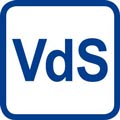Initial and Follow-up Inspections
We offer initial and follow-up inspections for:
- Sprinkler systems, water spray systems, fine spray systems, foam-extinguishing systems)
- Fire hose stations, outdoor hydrants and rising mains
- Gas-extinguishing systems
- Special extinguishing systems (e.g. spark-extinguishing systems, extinguishing systems for kitchen/canteen protection)
- Fire detection and fire alarm systems
- Smoke exhaust and ventilation systems (smoke and heat exhaust systems, smoke exhaust systems in staircases, machine smoke extraction systems, smoke control pressure systems)
- Fire-resisting closures
- Voice alarm systems
- Special fire protection systems such as oxygen reduction systems
Initial testing/approval
The initial inspection attests to compliance with the building regulations. It also has tangible effects on an evaluation by the insurers. For this reason, the initial inspection involves an extensive catalogue of questions to clarify, among other things, the following issues: Does the amount of protection conform to the regulations? Is the volume of extinguishing agent appropriate for the existing risk? Is the functional interaction of the components ensured?
The system is thoroughly vetted by the specialists at the Inspection Services who simultaneously assess and approve the quality of the system in the context of the relevant building regulation as experts from the building authority. With gas-extinguishing systems, the test report also serves as documentation for the expert inspections required under the guidelines of the employers’ liability insurance associations.
Follow-up inspections
Changes in the underlying conditions, such as changes of use of buildings and rooms, can impair the long-term functioning of the fire protection systems. Against this background, fire protection systems must be monitored at regular intervals. These follow-up inspections, which under some circumstances may have to be performed several times a year, are specified not only by the insurers. Irrespective of this, the inspections must also conform to the building regulations (e.g. the technical testing regulations), and also offer maximum fire protection in the interests of personal safety.

